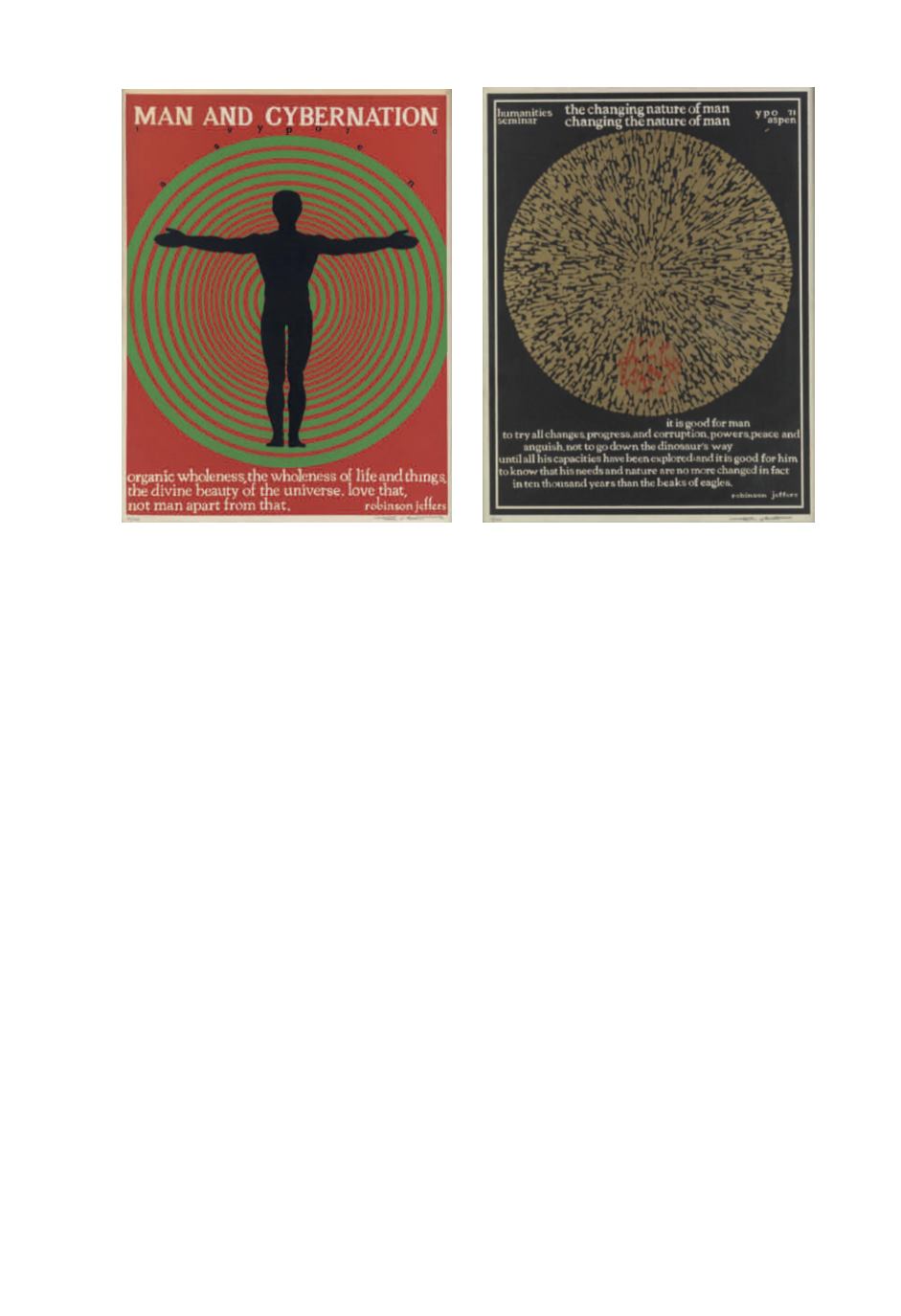

local issues” (Benton p. 7). Benton himself said, “the purpose of a poster is to graphically make a
statement. Words and graphics must be directed to get across one idea universally. A poster should
leave no doubt about what the artist means, and it should have the same interpretation by everyone”
(Benton p. 75). The image of the peace sign and the dove were first used by Benton in his 1968 poster,
Peace
. The motif of the dove and the circle were recurring themes in much of his graphic work.
PREVIOUSLY UNRECORDED
-
RARE
. Not in Benton.
[700/1,000]
THOMAS W. BENTON (1930-2007)
241
●
MAN AND CYBERNATION / ASPEN. 1970.
25
1
/
2
x19
3
/
4
inches, 64
3
/
4
x49
1
/
2
cm.
Condition A. Hand-signed and numbered 21/100 by the artist in pencil. Silkscreen. Paper. Framed.
“Benton’s posters span forty years of Aspen’s and the country’s political history, serving as a powerful visual
account of the issues, events and movements that shaped local and national politics” (Benton p. 29). This
image also appears as a silkscreen with the title
Life.
RARE
. Not in Benton.
[700/1,000]
THOMAS W. BENTON (1930-2007)
242
●
THE CHANGING NATURE OF MAN / CHANGING THE NATURE OF MAN. 1971.
25
1
/
2
x19
3
/
4
inches, 64
3
/
4
x49
1
/
2
cm.
Condition A. Hand-signed and numbered 17/100 by the artist in pencil. Silkscreen. Paper. Framed.
This image originally appeared in a serigraph Benton designed in 1969 with the title
Life Cell III.
“His prints [were produced] in limited, unnumbered runs” (Benton p. 8); they “were distinctive given
his commitment to formalism, an infrequent choice amongst activist artists and likely a carryover
from his earlier architectural training” (ibid). “Benton’s frequent use of the circle was a natural
progression from his study of Eastern Art. The circle, with its implied perfection, becomes a consistent
element in his later work” (Benton p. 123). Although Benton lived in Aspen for over forty years, his
designs for the YPO Humanities Seminars have not yet been identified with his body of work.
RARE
.
[700/1,000]
241
242
Lot 240 (continued)
















